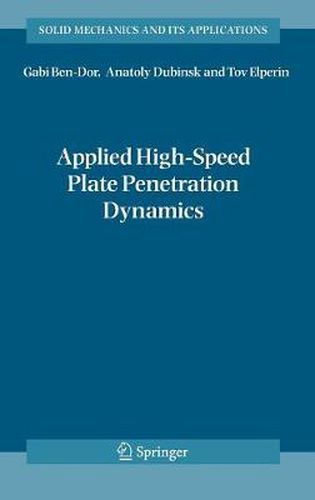Readings Newsletter
Become a Readings Member to make your shopping experience even easier.
Sign in or sign up for free!
You’re not far away from qualifying for FREE standard shipping within Australia
You’ve qualified for FREE standard shipping within Australia
The cart is loading…






This title is printed to order. This book may have been self-published. If so, we cannot guarantee the quality of the content. In the main most books will have gone through the editing process however some may not. We therefore suggest that you be aware of this before ordering this book. If in doubt check either the author or publisher’s details as we are unable to accept any returns unless they are faulty. Please contact us if you have any questions.
High-speed impact dynamics is of interest in the fundamental sciences, e.g., astrophysics and space sciences, and has a number of important applications in military technologies, homeland security and engineering. When compared with experiments or numerical simulations, analytical approaches in impact mechanics only seldom yield useful results. However, when successful, analytical approaches allow us to determine general laws that are not only important in themselves but also serve as benchmarks for subsequent numerical simulations and experiments. The main goal of this monograph is to demonstrate the potential and effectiveness of analytical methods in applied high-speed penetration mechanics for two classes of problem. The first class of problem is shape optimization of impactors penetrating into ductile, concrete and some composite media. The second class of problem comprises investigation of ballistic properties and optimization of multi-layered shields, including spaced and two-component ceramic shields. Despite the massive use of mathematical techniques, the obtained results have a clear engineering meaning and are presented in an easy-to-use form. One of the chapters is devoted solely to some common approximate models, and this is the first time that a comprehensive description of the localized impactor/medium interaction approach is given. In the monograph the authors present systematically their theoretical results in the field of high-speed impact dynamics obtained during the last decade which only partially appeared in scientific journals and conferences proceedings.
$9.00 standard shipping within Australia
FREE standard shipping within Australia for orders over $100.00
Express & International shipping calculated at checkout
This title is printed to order. This book may have been self-published. If so, we cannot guarantee the quality of the content. In the main most books will have gone through the editing process however some may not. We therefore suggest that you be aware of this before ordering this book. If in doubt check either the author or publisher’s details as we are unable to accept any returns unless they are faulty. Please contact us if you have any questions.
High-speed impact dynamics is of interest in the fundamental sciences, e.g., astrophysics and space sciences, and has a number of important applications in military technologies, homeland security and engineering. When compared with experiments or numerical simulations, analytical approaches in impact mechanics only seldom yield useful results. However, when successful, analytical approaches allow us to determine general laws that are not only important in themselves but also serve as benchmarks for subsequent numerical simulations and experiments. The main goal of this monograph is to demonstrate the potential and effectiveness of analytical methods in applied high-speed penetration mechanics for two classes of problem. The first class of problem is shape optimization of impactors penetrating into ductile, concrete and some composite media. The second class of problem comprises investigation of ballistic properties and optimization of multi-layered shields, including spaced and two-component ceramic shields. Despite the massive use of mathematical techniques, the obtained results have a clear engineering meaning and are presented in an easy-to-use form. One of the chapters is devoted solely to some common approximate models, and this is the first time that a comprehensive description of the localized impactor/medium interaction approach is given. In the monograph the authors present systematically their theoretical results in the field of high-speed impact dynamics obtained during the last decade which only partially appeared in scientific journals and conferences proceedings.